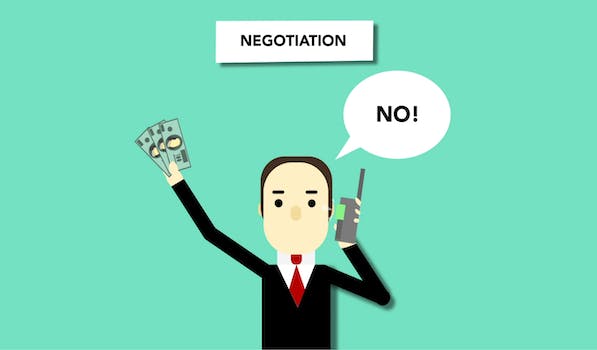How To Save Money On Budget
“Maximize your savings with these budget-friendly tips.”
Introduction
Introduction: Saving money is an essential aspect of financial planning. It helps you to achieve your financial goals and secure your future. However, saving money can be challenging, especially when you are on a tight budget. In this article, we will discuss some practical tips on how to save money on a budget. These tips will help you to cut down your expenses and increase your savings.
10 Simple Ways to Cut Expenses and Save Money
Saving money is a goal that many people have, but it can be difficult to achieve. With so many expenses to cover, it can feel like there’s never enough money to go around. However, there are simple ways to cut expenses and save money without sacrificing your quality of life. Here are 10 simple ways to save money on a budget.
1. Create a budget
The first step to saving money is to create a budget. This will help you understand where your money is going and where you can cut back. Start by listing all of your monthly expenses, including rent, utilities, groceries, and entertainment. Then, compare your expenses to your income to see where you can make adjustments.
2. Cut back on eating out
Eating out can be expensive, especially if you do it frequently. Instead, try cooking at home more often. Not only is it cheaper, but it’s also healthier. You can also try meal prepping to save time and money.
3. Use coupons and discounts
Coupons and discounts can help you save money on everything from groceries to clothing. Look for coupons online or in your local newspaper. You can also sign up for loyalty programs at your favorite stores to receive discounts and special offers.
4. Cancel subscriptions
If you’re paying for subscriptions that you don’t use, cancel them. This includes gym memberships, magazine subscriptions, and streaming services. You can always sign up again later if you decide you miss them.
5. Buy generic
Generic products are often just as good as name-brand products, but they’re usually cheaper. When shopping for groceries or household items, look for generic options to save money.
6. Use public transportation
If you live in an area with public transportation, consider using it instead of driving. This can save you money on gas and car maintenance. Plus, it’s better for the environment.
7. Shop around for insurance
Insurance can be a significant expense, but you can save money by shopping around. Compare rates from different providers to find the best deal. You can also consider raising your deductible to lower your monthly premium.
8. Cut back on energy usage
Reducing your energy usage can help you save money on your utility bills. Turn off lights and electronics when you’re not using them, and adjust your thermostat to save on heating and cooling costs.
9. Buy used
Buying used items can be a great way to save money. Look for used furniture, clothing, and electronics online or at thrift stores. You can often find high-quality items at a fraction of the cost of new ones.
10. Plan ahead
Finally, planning ahead can help you save money in the long run. This includes things like meal planning, shopping for sales, and setting aside money for unexpected expenses. By being proactive, you can avoid overspending and stay on track with your budget.
In conclusion, saving money on a budget is possible with a little bit of effort and planning. By following these 10 simple tips, you can cut expenses and save money without sacrificing your quality of life. Remember, every little bit counts, so start small and work your way up to bigger savings. Good luck!
Creating a Budget: Tips and Tricks for Saving Money

Are you tired of living paycheck to paycheck? Do you want to save money but don’t know where to start? Creating a budget is the first step to taking control of your finances and saving money. Here are some tips and tricks for creating a budget that will help you save money.
1. Track Your Expenses
The first step in creating a budget is to track your expenses. This means keeping track of every penny you spend for a month. This will give you an idea of where your money is going and where you can cut back. You can use a spreadsheet or an app to track your expenses.
2. Set Goals
Once you have tracked your expenses, it’s time to set some goals. What do you want to achieve with your budget? Do you want to pay off debt, save for a vacation, or build an emergency fund? Setting goals will help you stay motivated and focused on your budget.
3. Create a Budget
Now that you have tracked your expenses and set some goals, it’s time to create a budget. Start by listing all of your income and expenses. Be sure to include everything, from your rent or mortgage payment to your daily coffee. Once you have listed all of your expenses, subtract them from your income. The amount left over is what you have to work with.
4. Cut Back on Expenses
If you find that you don’t have enough money left over after paying your expenses, it’s time to cut back. Look for areas where you can reduce your spending. This could mean cutting back on eating out, canceling subscriptions you don’t use, or finding a cheaper cell phone plan.
5. Use Coupons and Discounts
Another way to save money is to use coupons and discounts. Look for coupons online or in your local newspaper. You can also sign up for loyalty programs at your favorite stores to receive discounts and special offers.
6. Shop Smart
When you do need to make a purchase, be sure to shop smart. Compare prices at different stores and look for sales and discounts. You can also buy in bulk to save money on items you use frequently.
7. Avoid Impulse Purchases
One of the biggest budget killers is impulse purchases. Before making a purchase, ask yourself if you really need it. If it’s not something you need, wait a few days before making the purchase. This will give you time to think about whether or not you really want it.
8. Use Cash
Using cash instead of credit cards can help you stay within your budget. When you use cash, you can physically see how much money you have left and are less likely to overspend.
9. Automate Your Savings
Automating your savings is a great way to save money without even thinking about it. Set up automatic transfers from your checking account to your savings account each month. This will help you build your savings without even realizing it.
10. Review Your Budget Regularly
Finally, it’s important to review your budget regularly. This will help you stay on track and make adjustments as needed. Review your budget at least once a month to make sure you are staying within your budget and making progress towards your goals.
Creating a budget can be a daunting task, but it’s the first step to taking control of your finances and saving money. By tracking your expenses, setting goals, and cutting back on expenses, you can create a budget that works for you. Use coupons and discounts, shop smart, and avoid impulse purchases to save even more money. Automate your savings and review your budget regularly to stay on track and achieve your financial goals.
The Ultimate Guide to Couponing and Saving Money
Are you tired of living paycheck to paycheck? Do you want to save money but don’t know where to start? Look no further than couponing! Couponing is a great way to save money on everyday items and can help you stick to your budget. Here’s the ultimate guide to couponing and saving money.
First, start by collecting coupons. You can find coupons in newspapers, magazines, online, and even in-store. Make sure to check the expiration date and any restrictions before using them. You can also sign up for loyalty programs at your favorite stores to receive exclusive coupons and discounts.
Next, plan your shopping trips around your coupons. Make a list of the items you need and check if you have any coupons for them. This will help you avoid impulse purchases and save money in the long run. You can also use apps like Ibotta and Checkout 51 to earn cashback on your purchases.
Another way to save money is by shopping during sales and clearance events. Many stores offer discounts on items that are out of season or overstocked. You can also use coupons on top of these sales to maximize your savings. Just make sure to only buy what you need and not get caught up in the excitement of a sale.
If you’re looking to save even more money, consider buying generic or store-brand items. These products are often just as good as name-brand items but cost less. You can also compare prices at different stores to find the best deals.
Don’t forget to also take advantage of free samples and trial sizes. These are great for trying out new products without committing to a full-size purchase. You can also use these samples for travel or to keep in your purse or car for emergencies.
Lastly, consider using cashback credit cards or rewards programs to earn points or cashback on your purchases. Just make sure to pay off your balance in full each month to avoid interest charges.
In conclusion, couponing is a great way to save money on everyday items and stick to your budget. Start by collecting coupons, planning your shopping trips, shopping during sales and clearance events, buying generic or store-brand items, taking advantage of free samples, and using cashback credit cards or rewards programs. With these tips, you’ll be on your way to saving money in no time!
How to Save Money on Groceries: A Comprehensive Guide
Saving money is a goal that many people have, but it can be difficult to achieve. One area where you can make a significant impact on your budget is by reducing your grocery expenses. Groceries are a necessary expense, but there are ways to save money without sacrificing the quality of your meals. In this comprehensive guide, we will explore various strategies for saving money on groceries.
The first step in saving money on groceries is to plan your meals. By planning your meals, you can create a shopping list that includes only the items you need. This will help you avoid impulse purchases and reduce food waste. You can also take advantage of sales and coupons by planning your meals around them.
Another way to save money on groceries is to buy in bulk. Buying in bulk can be cost-effective, especially for non-perishable items like rice, pasta, and canned goods. However, it’s important to only buy what you will use, as buying too much can lead to waste.
Shopping at discount stores and using generic brands can also help you save money on groceries. Discount stores often have lower prices than traditional grocery stores, and generic brands can be just as good as name-brand products. It’s important to compare prices and read labels to ensure that you are getting the best value for your money.
Using cashback apps and loyalty programs can also help you save money on groceries. Cashback apps like Ibotta and Checkout 51 offer rebates on select products, while loyalty programs like Kroger Plus and Safeway Club Card offer discounts and rewards for frequent shoppers. These programs can add up to significant savings over time.
Meal prepping is another strategy for saving money on groceries. By preparing meals in advance, you can avoid the temptation to eat out or order takeout. Meal prepping can also help you use up ingredients before they go bad, reducing food waste and saving money.
Finally, reducing meat consumption can also help you save money on groceries. Meat is often one of the most expensive items on a grocery list, so reducing your consumption can have a significant impact on your budget. You can try incorporating more plant-based meals into your diet or using meat as a flavoring rather than the main ingredient.
In conclusion, there are many strategies for saving money on groceries. By planning your meals, buying in bulk, shopping at discount stores, using cashback apps and loyalty programs, meal prepping, and reducing meat consumption, you can significantly reduce your grocery expenses without sacrificing the quality of your meals. It’s important to find the strategies that work best for you and your family and to stick to them consistently. With a little effort and planning, you can achieve your goal of saving money on a budget.
Maximizing Your Savings: Strategies for Living Frugally
Saving money is a goal that many people have, but it can be difficult to achieve. With so many expenses to consider, it can be challenging to find ways to cut back and save money. However, with a few simple strategies, it is possible to live frugally and maximize your savings.
One of the first steps to saving money is to create a budget. This involves tracking your income and expenses and identifying areas where you can cut back. By creating a budget, you can see exactly where your money is going and make adjustments as needed. This can help you identify areas where you are overspending and find ways to save money.
Another strategy for living frugally is to reduce your expenses. This can involve cutting back on unnecessary expenses such as eating out or buying expensive clothing. Instead, focus on finding ways to save money on everyday expenses such as groceries and utilities. This can involve shopping at discount stores, using coupons, and finding ways to reduce your energy usage.
One of the most effective ways to save money is to avoid debt. This can involve paying off any outstanding debts and avoiding new debt whenever possible. By avoiding debt, you can save money on interest payments and reduce your overall expenses.
Another strategy for living frugally is to focus on the essentials. This means prioritizing your needs over your wants and avoiding unnecessary purchases. By focusing on the essentials, you can save money and avoid overspending on things that you don’t really need.
One of the most important strategies for living frugally is to be mindful of your spending. This means being aware of your spending habits and making conscious decisions about how you spend your money. By being mindful of your spending, you can avoid impulse purchases and make more informed decisions about your finances.
Finally, it is important to be patient when it comes to saving money. Saving money takes time and effort, but it is worth it in the long run. By being patient and persistent, you can achieve your financial goals and live a more frugal lifestyle.
In conclusion, there are many strategies for living frugally and maximizing your savings. By creating a budget, reducing your expenses, avoiding debt, focusing on the essentials, being mindful of your spending, and being patient, you can save money and achieve your financial goals. With a little effort and determination, anyone can live a more frugal lifestyle and enjoy the benefits of financial freedom.
Conclusion
Conclusion: Saving money on a budget requires discipline, planning, and a willingness to make sacrifices. By creating a budget, tracking expenses, reducing unnecessary spending, and finding ways to increase income, anyone can successfully save money and achieve their financial goals. It may take time and effort, but the long-term benefits of financial stability and security are well worth it.






